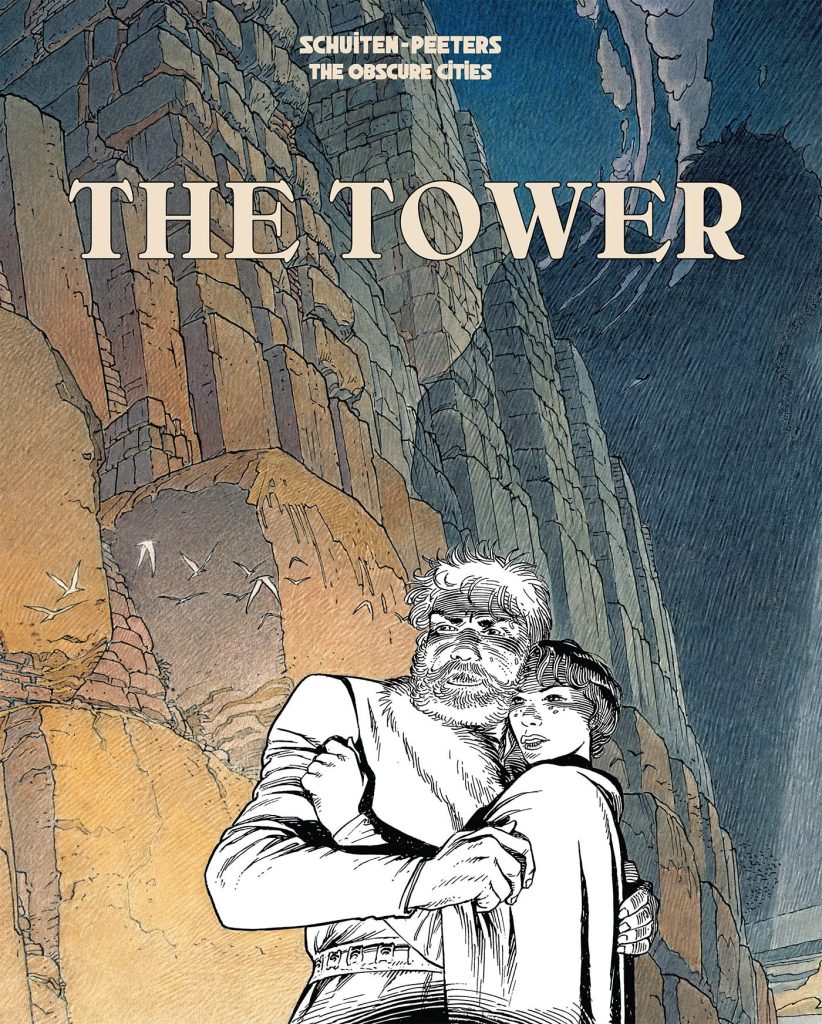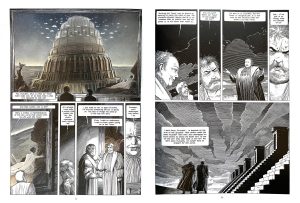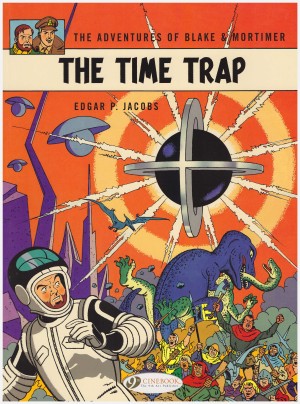Review by Woodrow Phoenix
The Tower is the fourth book in the ‘Obscure Cities’ series by artist François Schuiten and writer Benoît Peeters. It is set in a medieval time period several centuries earlier than the other stories although with Schuiten and Peeters’ way of mixing together details from many different epochs it is as atemporal as any of them. Each book has a different style of architecture as its focus, and the starting point for this story is the images of the Tower of Babel painted by Tobias Verhaecht, and more famously years earlier by Pieter Bruegel the Elder in 1563. The paintings are based on a passage from The Bible: Chapter 11 of Genesis, verses 1-9 describe how humanity originally had one language and everyone spoke it. But when people began to “build a tower that reaches to the heavens,” God scrambled their common language into hundreds of separate languages. Nobody could communicate with anyone else and this prevented the tower from being completed. ‘Babel’ sounds like the Hebrew word for ‘confused’.
Giovanni Battista has been living alone on one middle level of the immense, decaying structure of the Tower for over three decades. His job as a ‘third class maintainer’ is to monitor and repair crumbling sections, patch up cracks and prevent any further deterioration. However, with no contact with any of the Tower’s inspectors or any word from his fellow maintainers for years, he is running out of building materials and his level is falling apart faster than he can fix it. He decides to go down to the base of the Tower where he can see his employers face-to-face and make a formal complaint about his working conditions, but the exterior is in such terrible condition that there are no longer any stairs. How will he get down?
Schuiten’s rigorously detailed drawings use the language of Pirandello’s famously complex architectural renderings to create endless caverns of huge brick vaults, columns and arches that Battista lives and works among. He also adds a touch of M.C. Escher’s impossible structures to create an impressively intimidating environment that feels like a feverish nightmare. This is very much how the events unfold as Battista finds himself in a giant library with paintings that break the planes of his reality, becomes involved with a young woman who finds him irresistible despite his advanced years and his immense bulk, and defies the laws of gravity, space and time to try and discover who or what oversees the world within the structure of the Tower. Peeters writes in the afterword of his and Schuiten’s desire to make a book that was the visual and thematic opposite of their previous books. The Tower definitely achieves that aim, with the odd shapes of the story and its oblique ending taking the reader on an excursion from one mystery to another.






